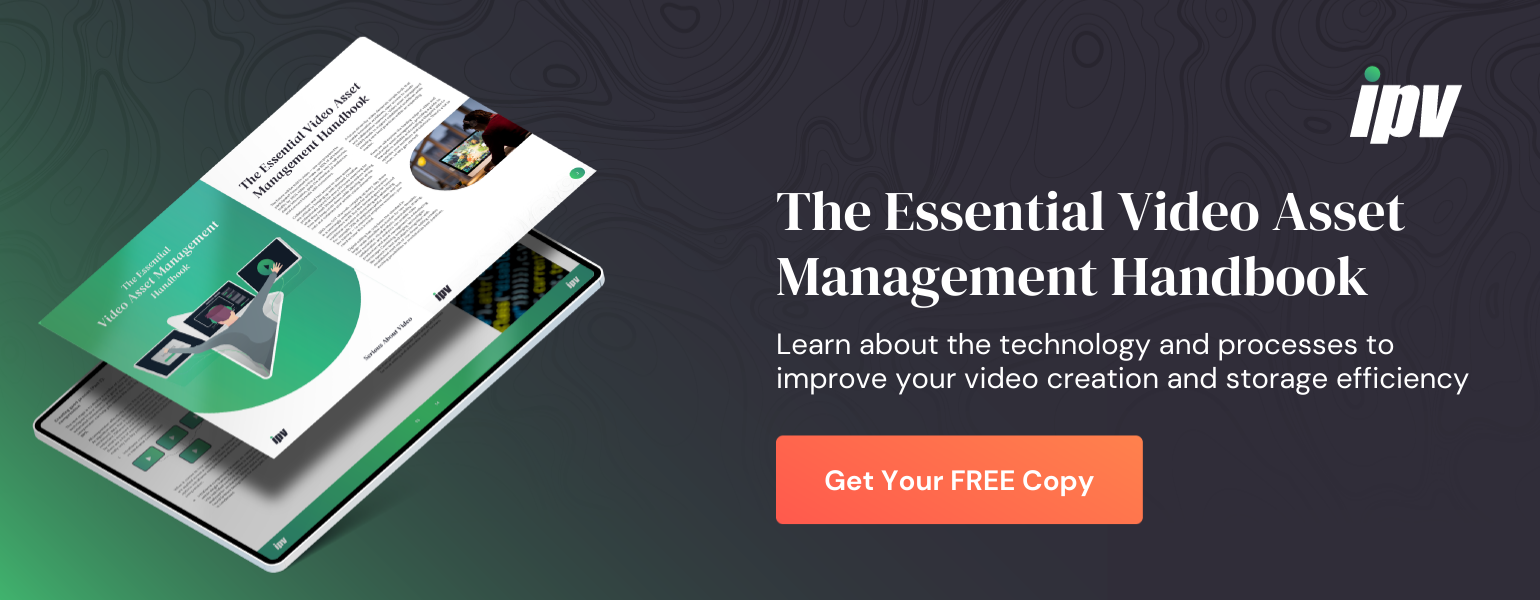
This is a time of transformation in video production. Software advances have progressed at breakneck speed in recent years, and the number of tools available to augment editing and asset management are greater than ever.
The demand for video content is also at an all time high. The development of OTT platforms increases opportunities for creatives, broadcasters and advertisers alike. However, there is also pressure to deliver. Getting video production workflows right is key to remaining relevant and keeping up with demand.
Technology is always a developing landscape. However, there are several key trends that have solidified over the last few years. Together, these developments are set to play a key role in video production throughout the 2020s. This is our list of the top developments to grasp this year, next year and the decade beyond.
1. A comprehensive view of assets and end-to-end delivery
Separate systems for asset management and delivery mean increased storage needs and result in difficult choices about archives. That's why trends in video production are currently led by VAM systems that deliver both a comprehensive view of assets and end-to-end delivery.
By bringing everything together, you can simplify your video production process thanks to improved collective functionality. You can also guarantee a more streamlined and dynamic archive section, which is vital for easy end-to-end access to your back catalog. This is the only way to see a significant return on investment (ROI), and thus the only real way to make video production work moving forward.
But how exactly do VAMs offer a global view of assets and the end-to-end delivery you’re after? For one, VAM software makes life easier with features such as direct exportation. We’ll discuss this more later, but being able to upload directly onto OTT platforms saves long-winded processes and storage needs.
An overview of assets and end-to-end delivery also delivers visibility that helps with security. Managing processes from a VAM system prevents rogue copies from getting into the wrong hands. This can protect everything from your copyright to your publishing rights, making sure videos are 100% fresh to your audience when you upload them. Visibility can also help with those all-important easy-to-access archives. VAMs include the power of object and speech recognition tools, for example, which can work wonders for visible and therefore simple archive searches, all from one easy place.
2. Cloud computing and collaboration
The cloud is hardly new to businesses, but video production is still somewhat behind. Most standard editing software won’t include cloud capabilities. What’s more, many companies are reluctant to use the cloud due to fears over both security and the often limited bandwidth of wide area networks (WANs). Luckily, developments in this tech mean that cloud-based video production isn’t as risky as it once was.
Around 90% of security breaches in any area of business come down to human error, so built-in security measures like those found in VAMs can do a great deal to reduce risks. Software like this provides repeatable processes and easy-to-track access of footage using a package that includes:
- Automation makes manual processes more streamlined, leaving you more time to produce more high-quality video content
- Permissions ensure you know exactly who has access to your data and files, so it can be protected
- Tracking makes sure there is visibility over who has accessed files and what changes have been made
- Watermarks protect your videos from being stolen and re-used
As for storage concerns, the simple advanced compression offered by VAMs as standard can make sure you’re able to store even large videos in the cloud without worry. VAMs also ensure cloud compatibility within editing tools, meaning you can focus on real-time video production without necessarily having to upload footage into the cloud itself.
In case you’re wondering what this can do for video production, consider the workflow changes possible once cloud-based video production is in place. 90% of the modern workforce say flexible working would improve morale, allowing your team to focus on video production at a time and place to suit, which can keep you on top from an employment point of view. Not to mention that cloud-based videos could open employment opportunities such as freelance and creative collaborations to take your business one step further.
3. Advanced integration — searchable archives
As we touched upon in our first point, searchable archives are vital for delivering visible results. Advanced integration using capabilities such as object recognition and speech detection is your best option here. These ‘sense simulator’ tools can do much more for archive management and production workflow than you might realize. For proof, consider that big-name companies like Google are spending millions on this pursuit. You could benefit from their findings by implementing a VAM with these capabilities built-in.
Of course, considering workflow is the best way to measure the value of integrations like these. Some workflow benefits you can expect to see include:
- Intelligent archive and retrieval using metadata
- Archive management and monetization for increased ROI
- Automated captioning with up to 90% accuracy and easy steps to correct inaccuracies
Each of these is vital to video production now and moving forward, and you must consider them in 2020 and beyond to see success.
As well as contributing to the visibility of videos, both object recognition and speech recognition can help with metadata which, as you may know, is vital to searchability. Rather than having to create their own descriptions, media managers can use object recognition and speech detection to choose from a range of pre-selected terms. This both saves time and makes it more likely that your videos will rank in relevant searches.
Industries who will find these integrations especially beneficial are those who have to consider things like branding and profanity within their video content. Object recognition can be fantastic for businesses like sporting brands who need to provide verifiable visibility statistics to sponsors. Speech recognition software can also help high-end companies spot and filter any potential profanities from their video content before sending it to the public.
4. Automated ingest
As we touched upon above, metadata is vital in modern video production. Sadly, manual metadata creation is both time-consuming and open to errors. This means your efforts might not be cost-effective and could even lead to complicated comparisons. That’s bad news all around, and it’s why automated metadata creation during ingest is the most robust use case from recognition software like those discussed above.
Thanks to object and speech recognition capabilities, VAMs can automatically scan clips before offering pre-set descriptive phrases that you can choose from as you see fit. This can lead to highly efficient metadata and searchability, as well as ensuring your videos stand in direct comparison to similar content from elsewhere.
Even better, technology-aided metadata of this nature can finally accelerate and enrich this process. That means you’ll be able to enjoy a more valuable archive with a lot less work on your end. That’s a benefit that no business can deny, and it’s guaranteed to become a video production staple for 2020 and beyond.
5. AI-enhanced analytics
Any technological trend of the future is guaranteed to include some form of AI. This automated way of doing things is, after all, the best chance we have at simplifying and improving future processes. AI-enhanced analytics are also at the heart of everything that you should do for your video production workflow. In fact, it’s a process that all the steps above are primarily working towards creating. Automated ingest, for instance, is a mostly AI-based process. But the artificial intelligence inherent in systems like VAMs doesn't stop there.
Other AI additions you can expect to see from the future of video production include:
- Theme detection — Object and speech recognition in itself is a form of theme detection, but that’s only the beginning of this complex AI process. Advanced systems can also take cues from things like light, camera movement, etc. What’s more, a computer can learn from how you react to suggestions, offering predictive-text style foreshadowing on even the most detailed video production decisions.
- Computer-generated content — As the BBC proved with a BBC 4 robot-created documentary, AI can also create and edit video content itself. While the documentary revealed that the technology does need development, AI software can produce clips that your team will then be able to construct into effective video content. This can save a great deal of time and makes sure that your team is always able to focus on more creative processes.
Keeping these easy video content processes in mind moving into 2020 is, by far, the best method to keep up with the competition. Embracing additions like AI, cloud computing and centralization of your assets into your video production could even see you staying ahead of your competitors for a long time to come.
Chat to Gabrielle about latest trends in video production and how your teams could benefit from MAM software. Book some time in her diary here! 👇👇👇


Speak Your Mind